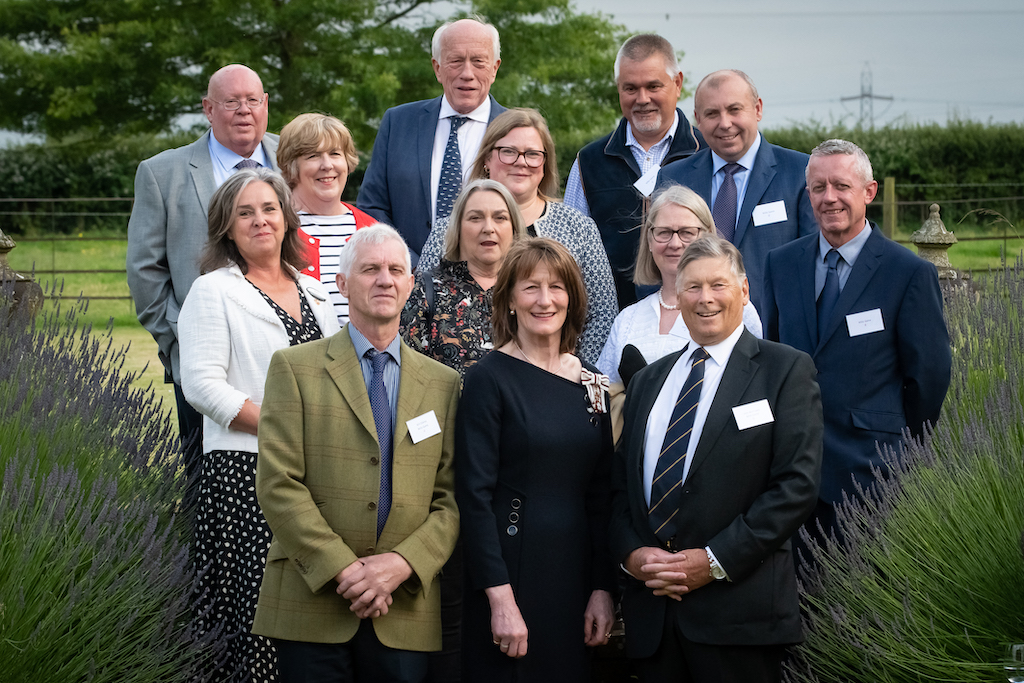Look east and you can see the town nestled in the valley, the twin spires of St. Leonards and St. Marys backed by the dark ridge of trees that is Hermitage Hill Coppice and High Rock. Cast your eyes further to the horizon and, on the right day, you will see the sunlight reflecting off the high-rise buildings of the Black Country.
In stark contrast, if one looks west it is the rolling greenery of Shropshire that greets the eye, the ridge of Meadowley rising out of the fields and farmland. Church yards are great places to look for wildlife. At Tasley there are some wonderful yew trees that grow next to the church. There is one specimen that I estimate to be around 300 years old. Like many old trees it is hollow in the middle. Surprisingly this does not necessarily mean death for the tree. The important tissues in a tree (those that carry water and nutrients) are located in the outer layer of the trunk, just under the bark. As long as this part of the tree is intact, it can survive for many years.
Looking into the hollow core of such an ancient living thing is a humbling experience. If only trees could talk, what tales would they tell? The bark is deeply textured and almost multicoloured. The branches have beautiful curved contours that remind me of wind-blown sand. Every part of the tree is toxic except the fleshy red aril that surrounds the seed. This is a popular food for birds. With the harsh winter that we have had, the tree is covered in seeds that have been stripped of their aril.
Yews are the slowest-growing of all British trees but reach the ripest age. The oldest tree in Britain is the Fortingall Yew in Scotland. It is believed to be 5000 years old. The species is often associated with sacred sites. They have significance for both druid beliefs in reincarnation and Christian beliefs in resurrection. Old yew trees can have periods where they stop growing and then re-start, signifying everlasting life. There has been a church at Tasley since 1138. The yew tree would have dated from around 30 years later. A spiritual building sheltered and protected by a deeply spiritual tree.
Above me in the branches of the tree there is the chatter of birds. They are in a transitional period at the moment. As well as the late winter shortage of natural food, they are also starting to think about territories and pairing up for the breeding season. Such challenging conditions can lead to tensions. Whilst walking through the church yard I almost step on two male great tits tangled in a frantic fight. They are rolling around amongst the grass, so locked into combat that they do not even notice me. Eventually they fly up into the branches of the yew tree. Sometimes in nature, the beauty is in the minute detail. Looking closely at the gravestones, one can see some incredibly hardy plants growing. They are mosses. I recognise two species typical of this habitat; Bryum Capillare and Grimmia Pulvinata.
To appreciate these plants fully one needs to look closely using a hand lens. G. Pulvinata has long silvery tips to the leaves and forms dense hummocks on the gravestone that look like little mice. At this time of year both species of moss are reproducing. They produce a beak-shaped capsule that produces spores. In the case of B. capillare, this is borne on a long red stalk. Mosses are lower plants so do not produce flowers but the sight of these sporophytes poking above the green carpet of moss makes the plant look quite beautiful.
Churchyards are also great places to look for higher plants. Being sacred sites they have not suffered from the ravage of the plough and the application of fertilisers so are often a refuge for all sorts of wildflowers. With the dark days this month spring seems a long way off. However, looking carefully amongst the leaf litter and gravestones, I can see the leaves of primrose and the hardened tips of snowdrop shoots already piercing through the ground.
Do one thing for wildlife this month:
National Nestbox Week begins on 14th February. St. Valentine’s Day is traditionally the time that birds begin to pair up for the breeding season. Natural nesting sites for British birds can be in short supply. Blue tits and great tits are hole-nesting birds. Old trees that develop holes are often felled as they are considered dangerous. Why not help the birds in your garden by putting up a nestbox? For more details see the British Trust for Ornithology webpage:www.bto.org/nnbw/index.htm





